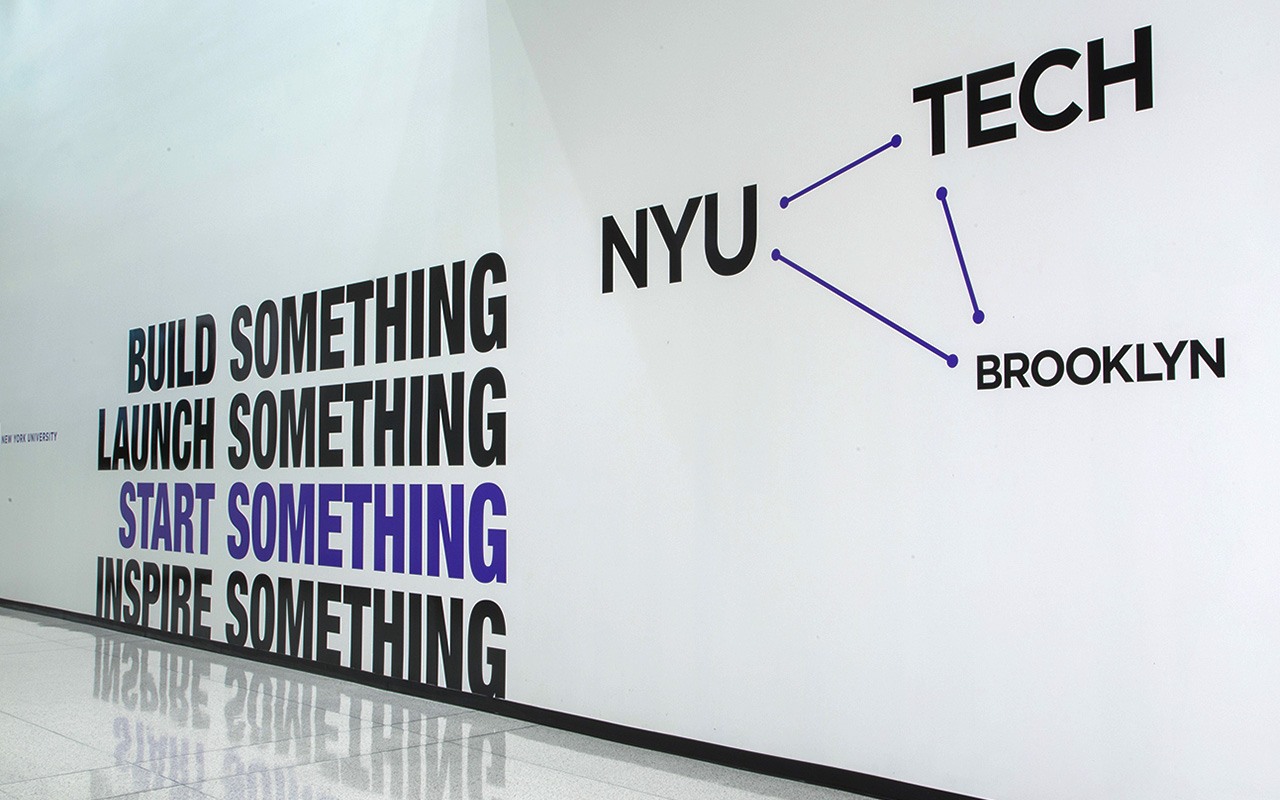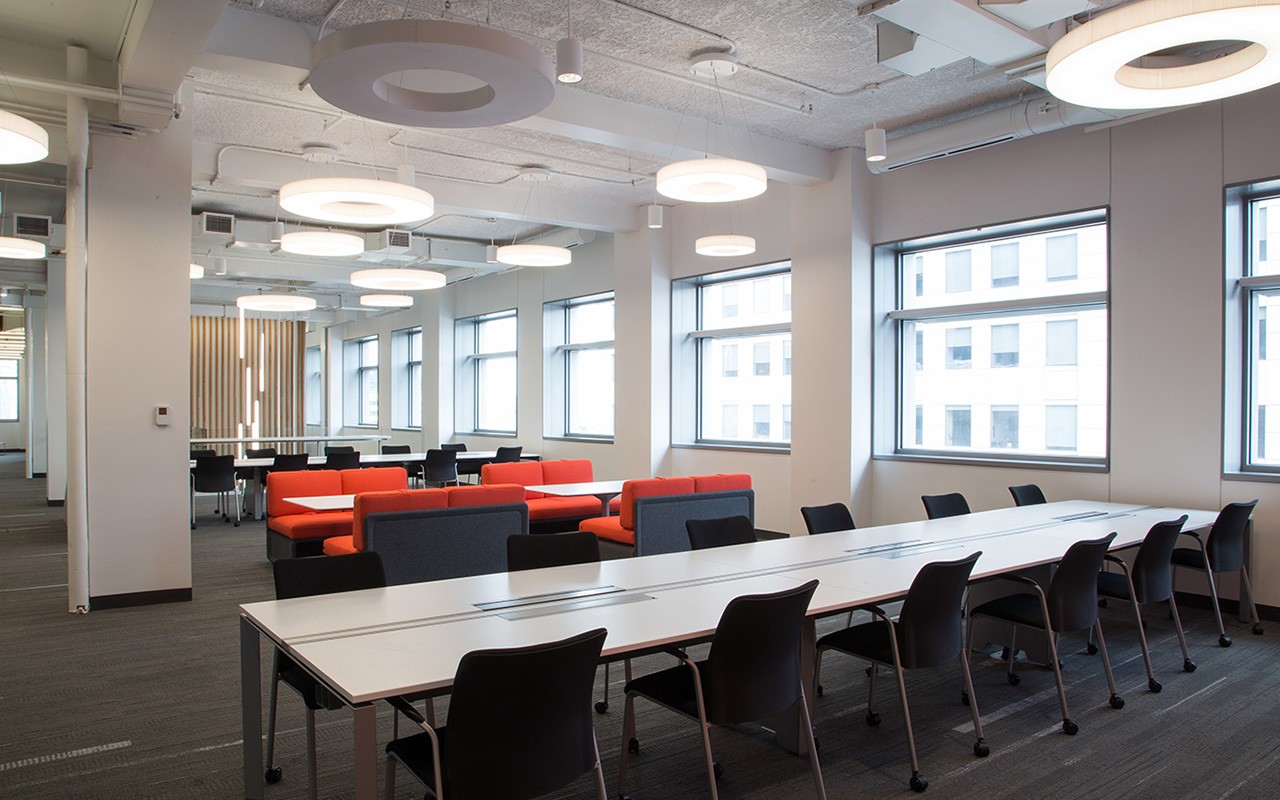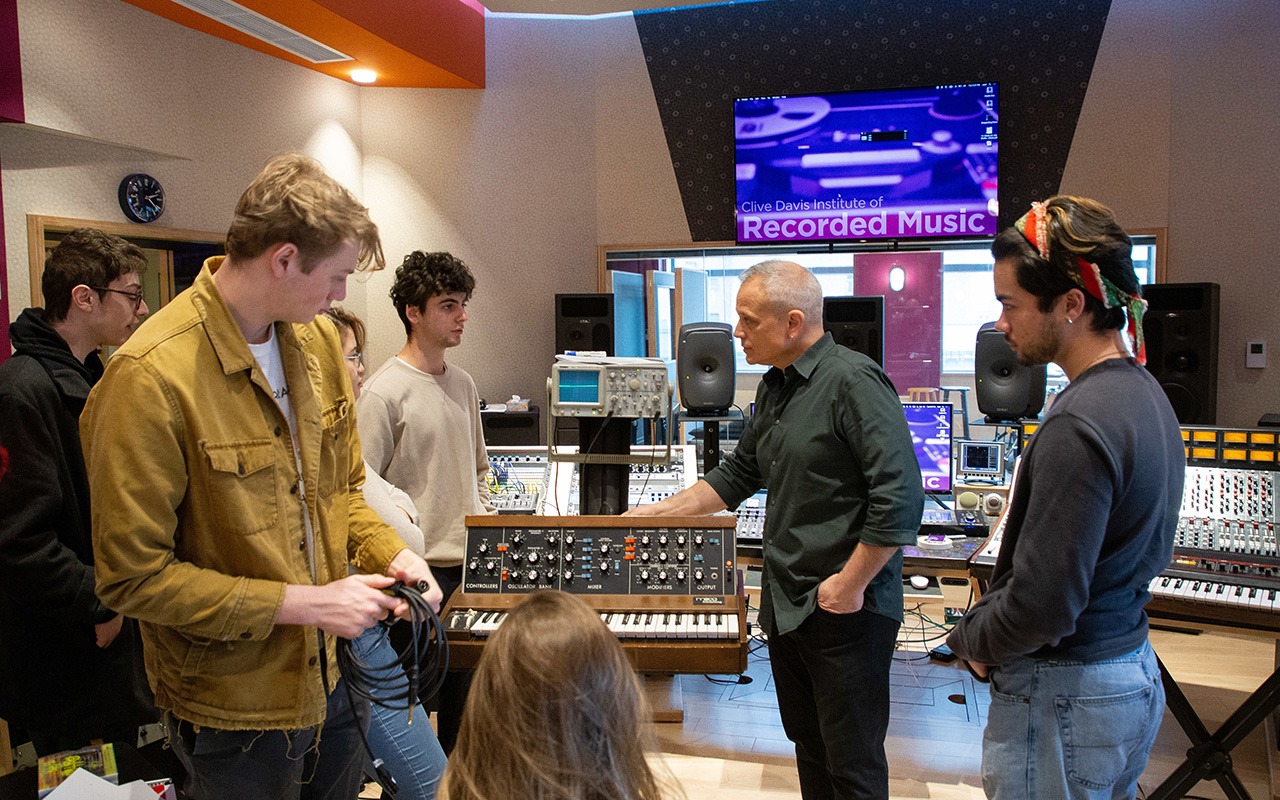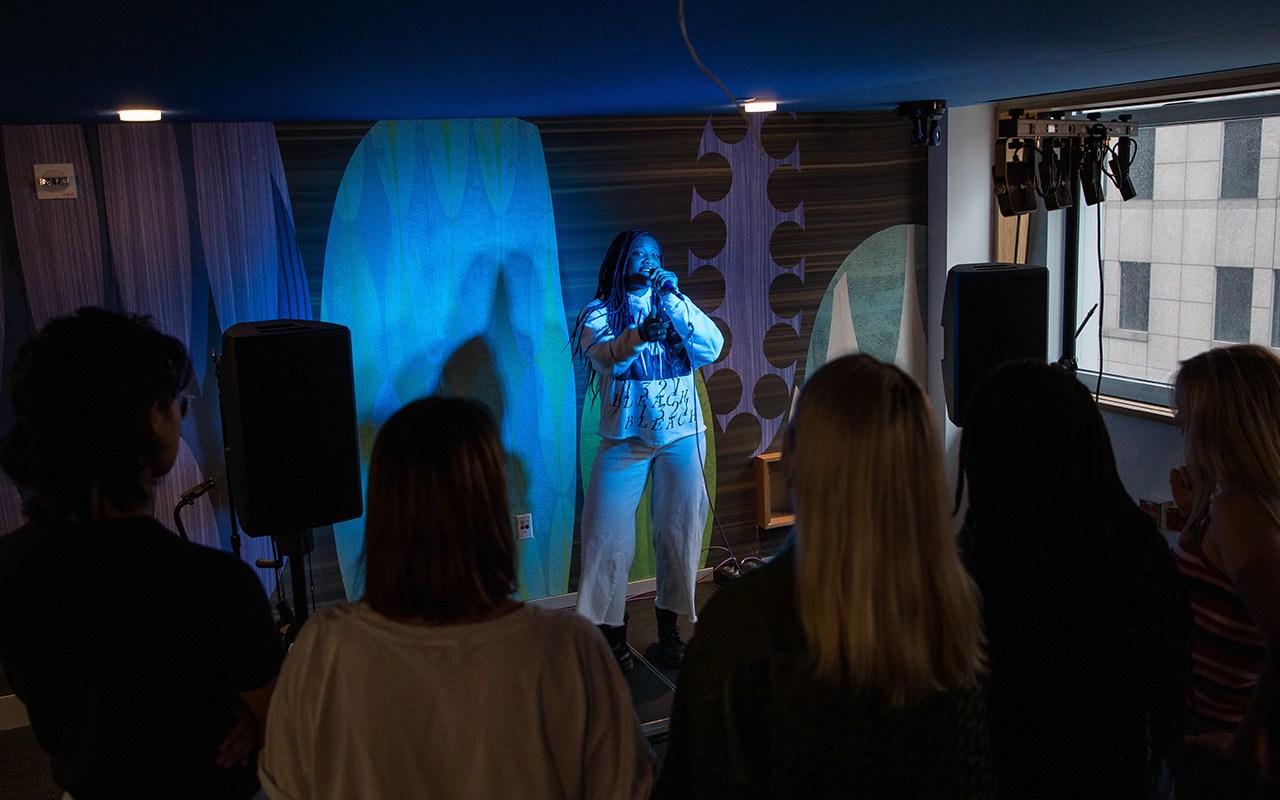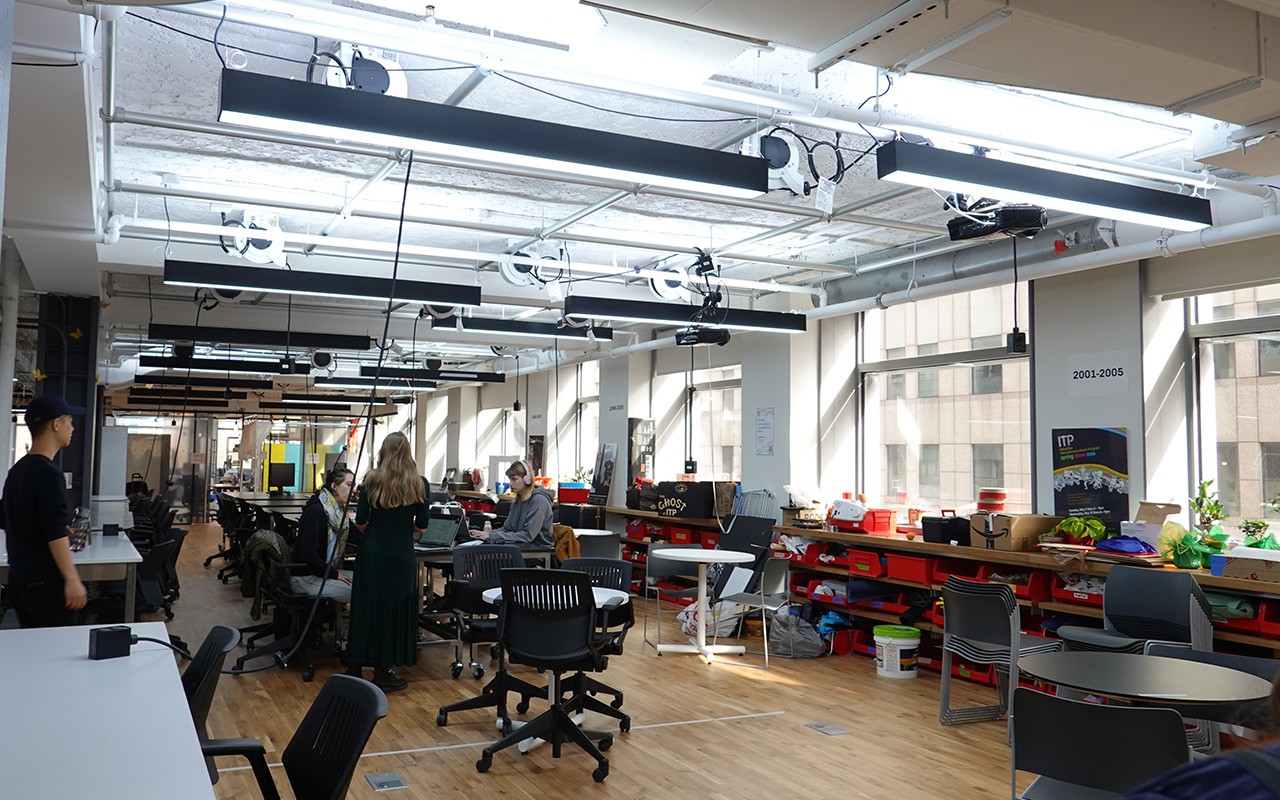370 Jay Street
NYU’s growing presence in Brooklyn nurtures the intersection of technology and emerging media by providing ever-expanding spaces where engineers and artists work side by side. The facilities that encourage this collaboration at NYU’s new 370 Jay Street building include media commons, audio labs, motion-capture labs, virtual reality rooms, black box theaters, recording studios, and maker spaces, as well as performance opportunities, and an exhibition hall—all placed together to deliberately accelerate innovation.
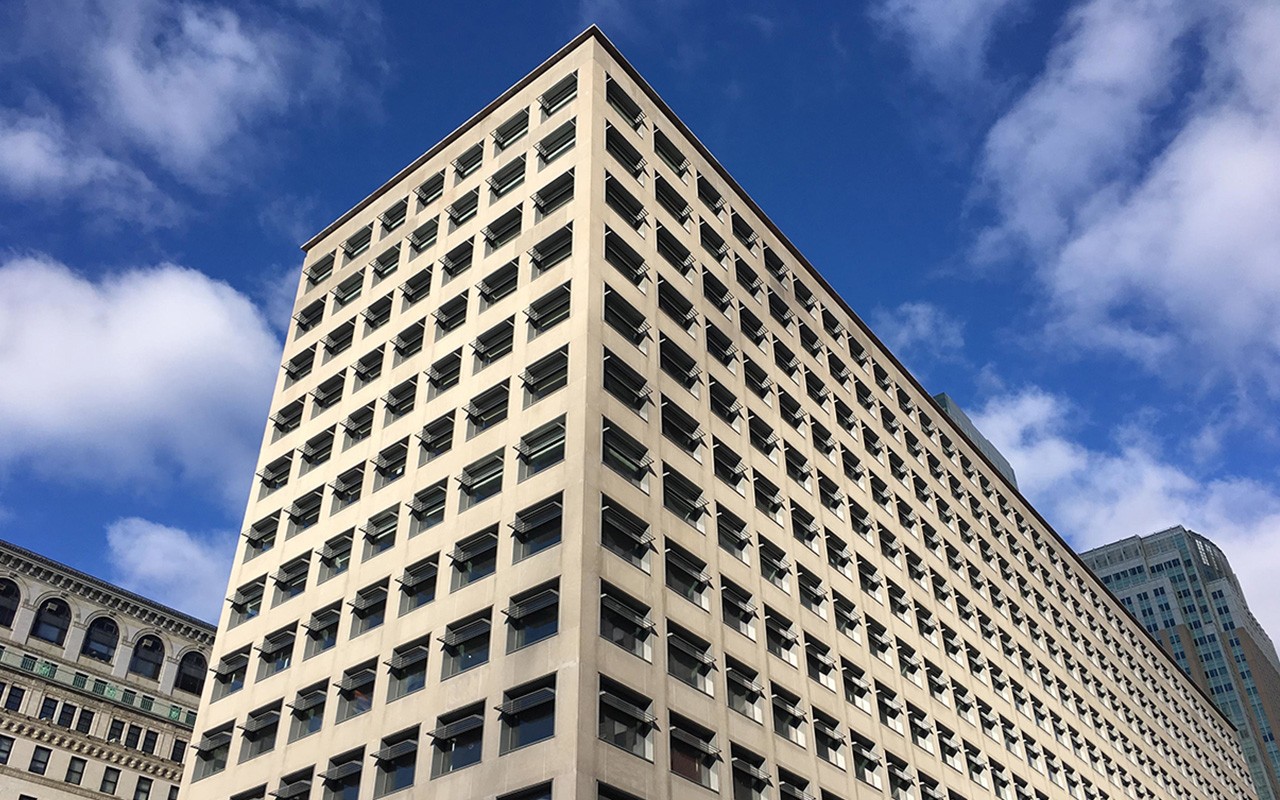
History
370 Jay Street signaled a turning point in American architecture when it opened in 1951. Designed to be the central headquarters of the New York City Board of Transportation (now known as the Metropolitan Transit Authority), the building set the tone for mid-century modernist office design. The revolutionary facade gave way to executive offices, thousands of worker spaces, ground floor retail, and the counting house and money vaults for the entire city transit system. The building remained in use for decades, until a decline in the economy forced its closure, leaving 370 Jay vacant and unused for several years. In 2012, NYU was selected to build and operate a new education and research center at 370 Jay Street; an opportunity to bring new life back to the Downtown Brooklyn community.

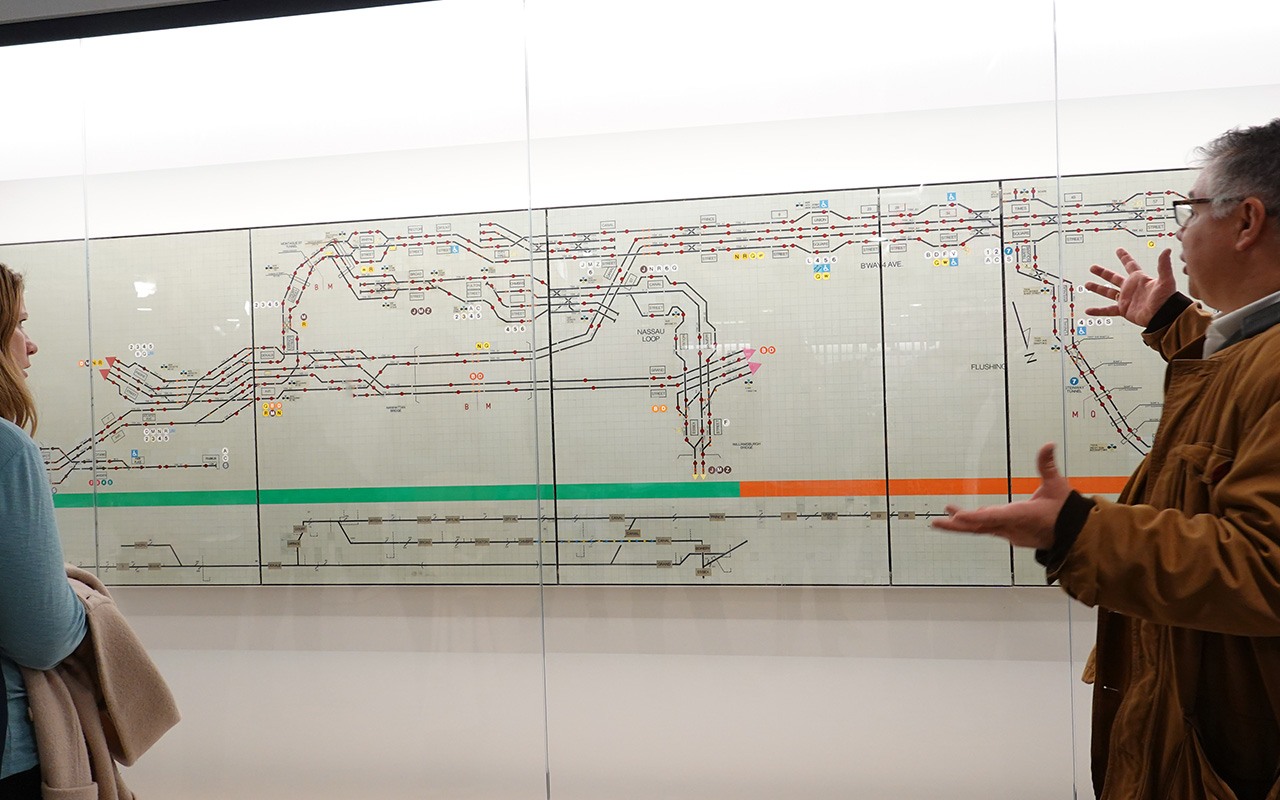
370 Jay Street Today
The Center for Urban Science and Progress (CUSP) floor is currently working on a project using light detection and ranging (LiDAR) in the form of a laser to map Downtown Brooklyn. This technology is important for the construction of self-driving cars, emergency responsiveness, and city planning. Also, two (2) NYU Tandon Future Labs (Data and Urban) have moved into the building on the 7th floor.
Additionally, Steinhardt music business students are utilizing the recording studios to write, mix, and produce EPs with students from other music-centered concentrations, not only from Steinhardt, but from Tisch, Gallatin, and the College of Arts and Science as well. 370 Jay truly serves as a hub for cross-school and cross-major collaboration, a new cornerstone for building community.
Sustainability
NYU’s approach to construction prioritizes environmental sustainability. At 370 Jay Street, a multi-pronged strategy was launched with the intention of reducing the building’s historical energy footprint; thus, reducing source consumption and lowering emissions.
Some initiatives include the installing of a new one-megawatt microturbine to serve as a local high-efficiency/low-waste source of electricity; restoring the building’s limestone facade to reduce the need for new materials and minimize waste sent to landfills; the building lighting system uses sensors to dim and brighten lights based on available natural sunlight, and green and reflective roofing reduces heating or cooling needs for the building. These initiatives reduce 370 Jay Street’s carbon footprint by more than 37 percent!
Check out NYU’s Office of Sustainability for more information on how NYU is staying green across all campuses, and working to heal our planet with the support of student leaders, senior administrators, and the City of New York.
